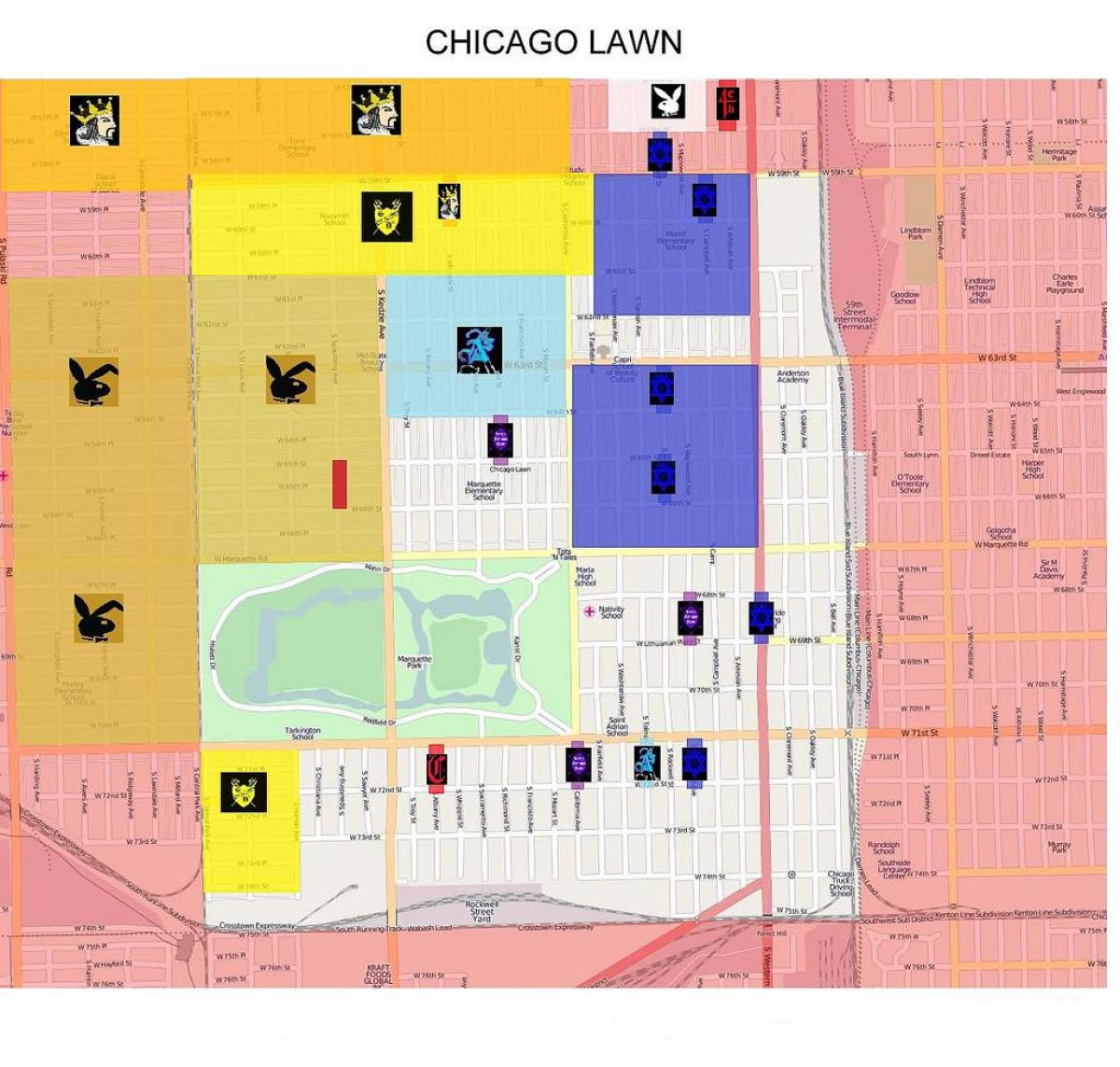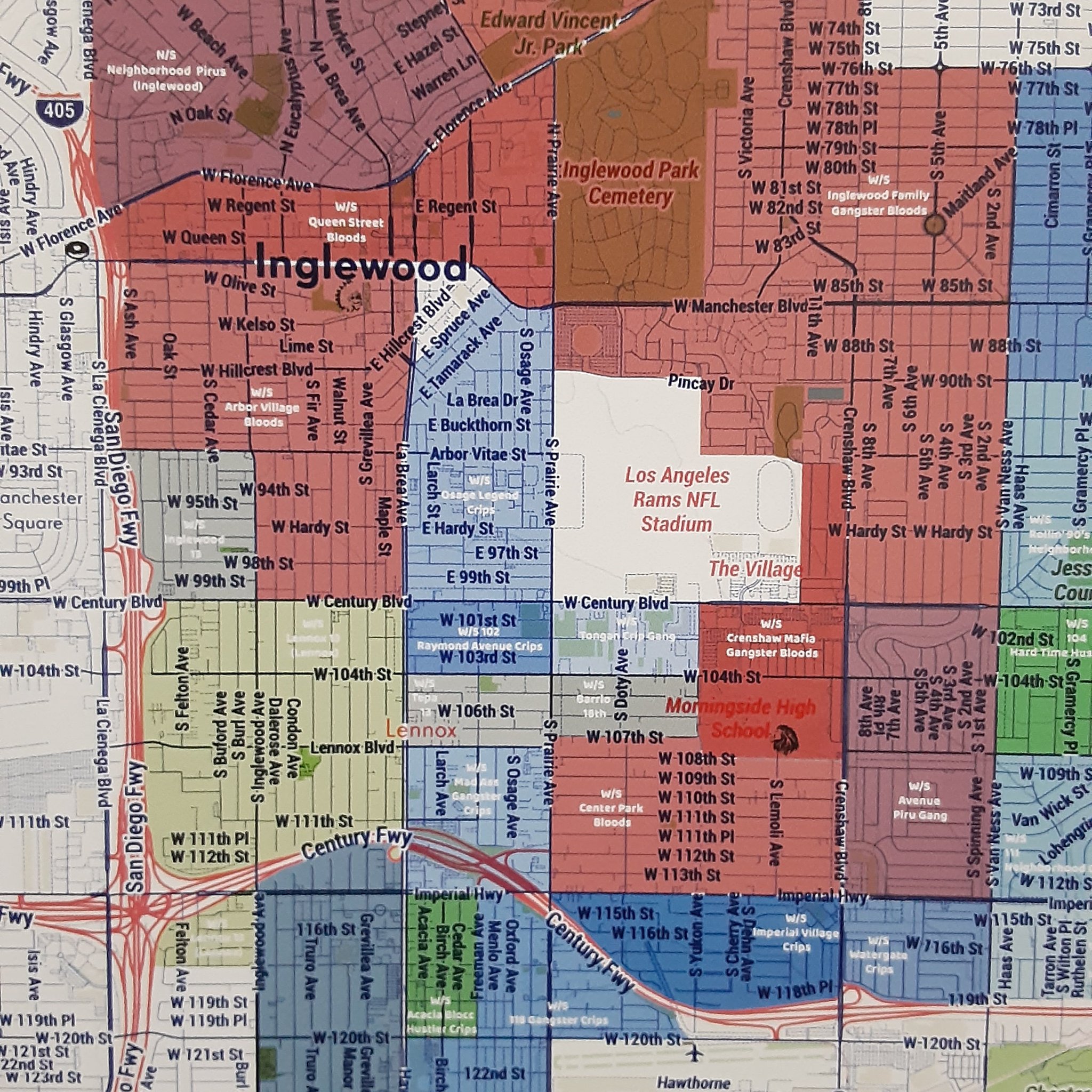Gang Map: The Ultimate Guide To Understanding And Navigating Urban Territories
Hey there, urban explorers and curious minds! If you've ever wondered about the hidden layers beneath the streets of your city, you're in for a treat. Gang maps are not just tools for law enforcement; they're a fascinating glimpse into the intricate world of urban territories. Whether you're into sociology, criminology, or just plain old curiosity, this guide will take you on a journey through the world of gang maps. Stick around, because we're diving deep!
Gang maps have been around longer than you might think. They're not just random sketches of turf boundaries; they're carefully crafted documents that reveal the complex relationships between gangs, neighborhoods, and even local governments. Understanding these maps is like unlocking a secret code to the urban landscape. And trust me, it's way more interesting than you'd imagine.
Before we dive into the nitty-gritty, let's talk about why gang maps matter. They're not just about crime—they're about community dynamics, social structures, and the ever-evolving nature of urban life. By the time you finish reading this, you'll have a whole new perspective on the streets you walk every day. So, let's get started!
Read also:Baked Potato Toppings Vegan A Comprehensive Guide To Elevate Your Meal
What Exactly Are Gang Maps?
Gang maps, in their simplest form, are visual representations of gang territories. But don't be fooled by the simplicity—these maps are packed with information. They show boundaries, alliances, rivalries, and even safe zones. Think of them as the GPS of the underworld, guiding both law enforcement and gang members through the often chaotic world of urban crime.
Law enforcement agencies use gang maps to track gang activity, predict potential conflicts, and allocate resources effectively. On the other hand, gang members use these maps to assert dominance, mark their territory, and avoid unnecessary confrontations. It's a delicate balance that affects the daily lives of countless city dwellers.
One of the most interesting aspects of gang maps is how they evolve over time. As neighborhoods change, so do the maps. Gentrification, migration, and economic shifts all play a role in reshaping these territories. It's a dynamic process that reflects the ever-changing nature of urban life.
Why Gang Maps Matter
So, why should you care about gang maps? Well, for starters, they're a crucial tool for understanding urban dynamics. By studying these maps, we can gain insights into how communities interact, how power is distributed, and how social structures are formed. It's not just about crime—it's about people and their relationships with the spaces they inhabit.
For policymakers, gang maps are invaluable. They help identify high-risk areas, allocate resources more effectively, and develop strategies to reduce violence. For researchers, they're a treasure trove of data, offering a window into the complexities of urban sociology. And for everyday citizens, they provide a deeper understanding of the world around them.
Let's not forget the human element. Gang maps are often tied to real stories of struggle, resilience, and change. They're a reflection of the challenges faced by communities and the ways in which people adapt to their environments. Understanding these maps can help us build safer, more inclusive cities for everyone.
Read also:The Youthful Rise Of Marlon Wayans A Nostalgic Journey
How Gang Maps Are Created
Creating a gang map is no easy task. It requires a combination of data collection, analysis, and interpretation. Law enforcement agencies typically gather information from a variety of sources, including police reports, informant tips, and community input. This data is then compiled into a map that reflects the current state of gang activity in a given area.
One of the most important aspects of creating a gang map is accuracy. Misrepresenting boundaries or alliances can have serious consequences, both for law enforcement and for the communities involved. That's why these maps are constantly updated and revised to reflect the latest developments on the ground.
Technology plays a big role in the creation of gang maps. GIS (Geographic Information Systems) software allows for detailed mapping and analysis, making it easier to visualize complex data. But even with all the tech, human insight remains crucial. Local knowledge and community engagement are essential for creating maps that truly reflect the realities of urban life.
Key Elements of a Gang Map
Every gang map has its own unique features, but there are some common elements that you'll find across the board. These include:
- Territories: Clearly defined areas controlled by specific gangs.
- Alliances: Relationships between gangs, often indicated by overlapping boundaries or shared symbols.
- Rivalries: Areas of conflict, marked by sharp boundaries or no-go zones.
- Safe Zones: Neutral areas where gang activity is minimal or non-existent.
Understanding these elements is key to interpreting gang maps accurately. They provide a framework for analyzing gang dynamics and predicting future developments. And while the specifics may vary from city to city, the underlying principles remain the same.
The Impact of Gang Maps on Communities
Gang maps have a profound impact on the communities they represent. For some, they're a source of empowerment, offering a way to reclaim their neighborhoods and reduce violence. For others, they're a reminder of the challenges they face every day. The effects can be both positive and negative, depending on how the maps are used and interpreted.
On the positive side, gang maps can help foster collaboration between law enforcement and community organizations. By working together, they can develop strategies to address the root causes of gang activity and promote peace. They can also serve as a tool for education, helping residents understand the dynamics at play in their neighborhoods.
However, there are also concerns about the potential misuse of gang maps. If not handled carefully, they can perpetuate stereotypes and reinforce negative perceptions of certain communities. It's important to approach these maps with sensitivity and a commitment to fairness and equity.
Addressing the Stigma
One of the biggest challenges in using gang maps is addressing the stigma associated with them. For many residents, being labeled as part of a gang-affected area can have serious consequences, from reduced property values to increased police surveillance. It's crucial to balance the need for information with the rights and dignity of individuals and communities.
Community engagement is key to overcoming these challenges. By involving residents in the creation and interpretation of gang maps, we can ensure that they reflect the realities on the ground. This participatory approach not only improves the accuracy of the maps but also builds trust and collaboration between stakeholders.
Technological Advancements in Gang Mapping
Technology has revolutionized the field of gang mapping, making it faster, more accurate, and more accessible than ever before. Advances in GIS software, data analytics, and mobile technology have transformed the way we collect and interpret information about gang activity.
One of the most exciting developments is the use of real-time data. With the help of smartphones and social media, law enforcement agencies can now track gang activity as it happens. This allows for quicker responses and more effective resource allocation. It also provides a wealth of data for researchers and policymakers, helping them develop more informed strategies.
Of course, with these advancements come challenges. Data privacy and security are major concerns, especially when dealing with sensitive information. It's important to implement robust safeguards to protect the rights of individuals and communities while still leveraging the benefits of technology.
Mobile Apps and Community Engagement
Mobile apps have emerged as a powerful tool for community engagement in gang mapping. These apps allow residents to report incidents, share information, and collaborate with law enforcement in real time. They also provide a platform for education and awareness, helping residents understand the dynamics of their neighborhoods.
Some of the most successful apps incorporate gamification elements, encouraging users to participate through rewards and recognition. This approach not only increases engagement but also fosters a sense of ownership and responsibility among residents. It's a win-win for everyone involved.
The Future of Gang Mapping
As cities continue to grow and evolve, so too will the field of gang mapping. The future holds exciting possibilities for innovation and collaboration, driven by advances in technology and a deeper understanding of urban dynamics.
One potential development is the integration of AI and machine learning into gang mapping. These technologies could help identify patterns and predict trends with unprecedented accuracy. They could also enhance data visualization, making it easier for stakeholders to interpret complex information.
Another promising area is the expansion of community-driven mapping initiatives. By empowering residents to create and maintain their own maps, we can ensure that they truly reflect the realities of urban life. This participatory approach not only improves the quality of the maps but also strengthens community bonds and resilience.
Challenges Ahead
Despite the potential, there are challenges to overcome. Data privacy, accuracy, and bias are just a few of the issues that need to be addressed. It's important to approach these challenges with a commitment to transparency, accountability, and inclusivity.
Education and training will also play a crucial role in the future of gang mapping. As the field becomes more complex, it's essential to equip stakeholders with the skills and knowledge they need to navigate it effectively. This includes not only law enforcement and researchers but also residents and community organizations.
Conclusion
And there you have it, folks—a comprehensive guide to the world of gang maps. From their origins and creation to their impact on communities and the future of the field, we've covered it all. Gang maps are more than just tools for law enforcement—they're a window into the complex dynamics of urban life.
As we've seen, understanding gang maps can help us build safer, more inclusive cities. By working together and leveraging the power of technology, we can create maps that truly reflect the realities of our neighborhoods. So, the next time you walk through your city, take a moment to appreciate the hidden layers beneath the surface.
Now, it's your turn! What do you think about gang maps? Do you have any questions or insights to share? Drop a comment below, and let's keep the conversation going. And don't forget to share this article with your friends and family. Knowledge is power, and together we can make a difference!
Table of Contents
- What Exactly Are Gang Maps?
- Why Gang Maps Matter
- How Gang Maps Are Created
- The Impact of Gang Maps on Communities
- Technological Advancements in Gang Mapping
- The Future of Gang Mapping
- Conclusion


